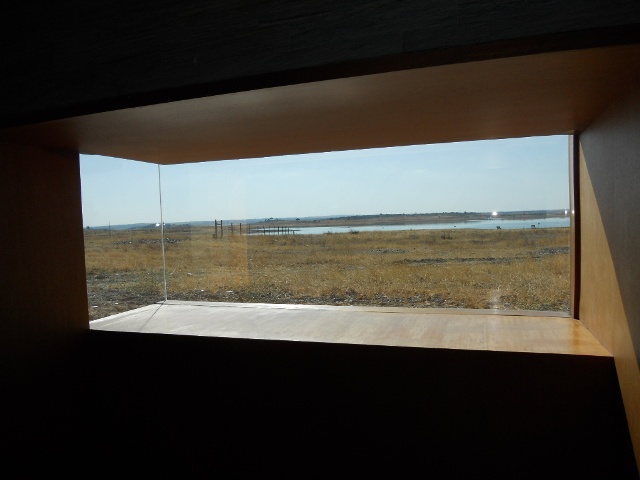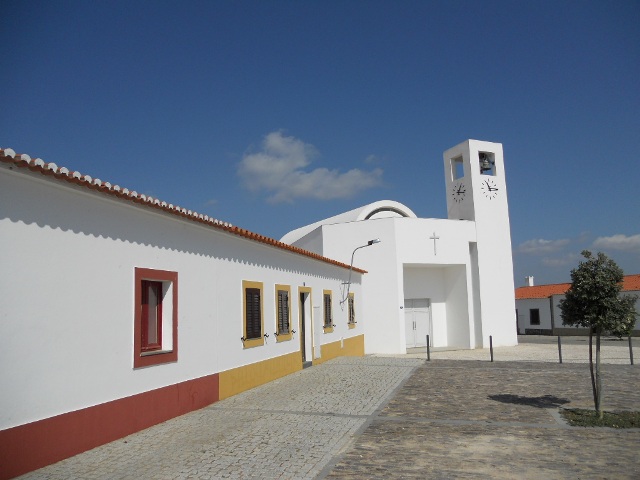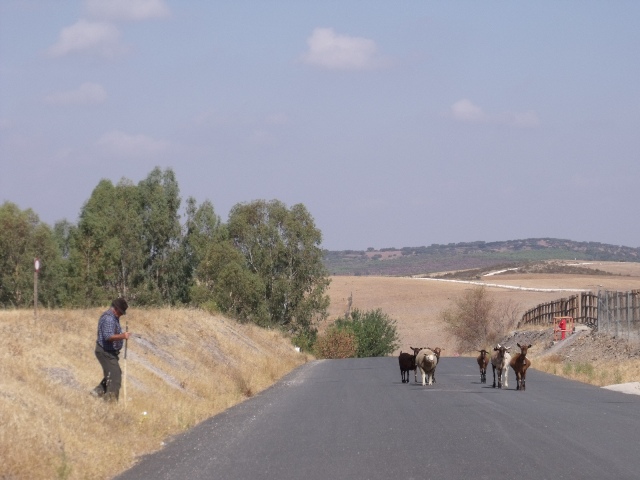Walk through the streets of the average Portuguese village during the day and you may wonder if the place has been abandoned. In the intense summer heat it seems most people shelter away from the sun inside the white-washed walls of their homes until the early evening, when the main square becomes a hive of social activity.
Wander into the tiny village of Luz on the banks of the Alqueva Lake in the Alentejo region of Portugal and the daytime emptiness hides a rather unique story. The modern houses give a clue that there’s something different about this village, but its real secrets (and many generations of history) can never again be discovered by taking a simple stroll. The reason for this eternal mystery is found in the lake; it is here that the old village lies submerged, flooded by the waters of Europe’s largest man-made lake less than 10 years ago.
When the reservoir was planned the government faced a tough decision. The old village of Luz was below the proposed water-line of the planned reservoir, but the benefits that the project would bring were such that the village could not be spared. Would they relocate people to the nearest town? Perhaps disperse the 300-odd residents around the local villages? After consultation with the villagers the authorities undertook what is considered to be a unique resettlement plan: they rebuilt Luz a couple of kilometres away on higher ground.
Those who had a house would get another, with the same amount of land. People would live next to their old neighbours where possible, although the road layout was modernised. And the church, the social hub of the village for generations, would be rebuilt with the important relics moved across to the new structure. Even the cemetery would be relocated, a traumatic process for many people and one that needed to be carried out with the utmost sensitivity.
People moved into the new Luz in November 2002 and the old buildings were destroyed before the waters of the lake claimed them forever. You can follow the line of a road to the south of the village as it drops into lake, emerging in the distance – a visible sign that things were not always as they now appear.
Thankfully the memories of old Luz, and of the whole process of moving a village, were captured on film and can be seen at the excellent museum at the edge of the village. The museum contains ethnographic exhibits from traditional life in Luz, but without doubt the highlight is the film that follows a dozen or so villagers as they prepare for the move, say goodbye to their old homes and move reluctantly to the new village. It is a film that is guaranteed to tug at the heartstrings, as it captures perfectly the emotions and losses faced by people whose families had owned those homes for hundreds of years. One old man laughs with sadness when he is told that the authorities will replace his fruit trees by planting new ones: “What’s the use? I wouldn’t be here to pick the fruit!” A schoolgirl, wise beyond her years, observes that “Everything happened at once so that it would seem nothing had changed.”

Museum in Luz – the view from this window looks out over the exact spot in the reservoir under which the old village lies
You can visit the Museu Da Luz while renting a houseboat on the Alqueva lake. There’s a marina around 1km from the village. Alternatively Luz is easy to reach by car, being only 5km from Mourao and around an hour’s drive from Evora. The museum is closed on Mondays.







This story is near to my heart because in Canada my sister lives near several small towns that were also moved when the St. Lawrence Seaway was constructed decades ago. I don’t they were as sensitive to the needs of dislocated citizens as Portugal seems to have been.
I was in this area a few months ago and loved it. When I go back I’ll be sure to visit Luz and witness first hand this interesting twist on history.
Thanks Gwen – I think the case of Luz is held up internationally as a well-managed relocation process, although it was still very difficult for the residents, many of who had been born in the houses from which they were being asked to move
Fascinating stuff, and a good metaphor for the Alentejo region itself; I imagine you could pass through this village or drive through the area without knowing the story behind it, just as the Alentejo itself seems to harbour secret stories and quietly impressive places that are without fanfare but just waiting to be discovered.